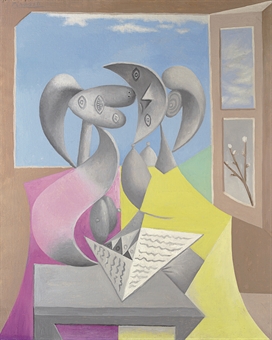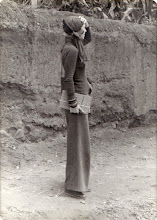New dogs, old tricks: How is the new crop of fairs and bienniales in emerging contemporary art markets like China and Latin America comparable to Documenta's founding credo, "intended to reconcile German public life with international [post-]modernity and also confront it with its own failed Enlightenment"in Kassel? Despite the constant undercurrent of self-critical pieces, the recurring red dragons and plays-on-'40s-propaganda, shows like the Shanghai Biennale aren't showing any signs of acknowledging any failures - rather, 2008's TransLocoMotion both reflects an essentially revolutionized art world that constantly evaluates its own fungible value, each step of the way, and unapologetically builds "the image of Shanghai as a cosmopolitan with vitality, creativity and the openness". With little confrontation of Enlightenment failures (which abound, in my opinion, in both China and Latin America), there is still an explicit attempt to create a cultural image, strategically, and to very much fungible ends (tourism, visibility, booming markets). - Case study of the 2008 Whitney Biennial: I don't know if the limp yet scathing reviews are a sign of the artists' and even curators' confrontation with "Enlightenment failures" at best, or economic failures at most probable... The curators' apologetic tone is definitely unforgivable, in my opinion - it seemed to me they were turning over the mulch rather than seizing its fertility and planting some seeds for thought. If they are the valuemakers, perhaps they should look to the Chinese who feverishly tend their own garden.
- If the value is cultural-symbolic, based on the artist's reputation, then can good artists make bad work? Whether or not they do so intentionally, as a commentary, parody, etc, if we acknowledge that there is good and bad art (the economics certainly do), then to geniuses ever lay bad eggs? Or can good eggs go bad in different art environments? - That Damien Hirst was #4 in the top 10 auction-house heavyweights in 2008, rising mind-numbingly fast in the last years, next to recognized masters whose works rose in price, competing among each other to raise the price records for decades, is a record in itself - "Capital goes where it's wanted, and stays where it's well treated." - now that it's coming from a globalized set of investors, in the information age, in a new age of artist-entrepreneurs (Koons, Murakami, Hirst...), with a slowing economy and a shortening attention-span, is his exceptional rise the start of a new trend? How does his success compute with the "failure" and "ephemerality" of the 2008 Whitney Biennial?
"Three days after the aborted sale, Christie’s took 16 Picasso’s to the market at the New York’s Rockefeller Plaza. The star lot was a painting from the Surrealist period entitled Deux personnages (Marie-Therese et sa soeur lisant). Never previously seen at auction and in private hands since 1984, Christie’s was expecting $25m. It only just reached $18m." Was the art being sold? Or the artist? Or the investment in a cultural value? A timely play of art market actors dancing around the unsaid, the economics of disavowal, both victims and creators of their environment, wielding certified provenance lists, star-studded lists of press contacts, bibliographies, circulation in the files of high-end curators, on the altar of the attention economy...

Speaking of altars: Alfredo Portillos, winner of Rio de Janeiro Biennial:  altar at Galeria Vortice for the Day of the Dead 2008 in Buenos Aires, Argentina
altar at Galeria Vortice for the Day of the Dead 2008 in Buenos Aires, Argentina
 altar at Galeria Vortice for the Day of the Dead 2008 in Buenos Aires, Argentina
altar at Galeria Vortice for the Day of the Dead 2008 in Buenos Aires, Argentina
Aucun commentaire:
Enregistrer un commentaire